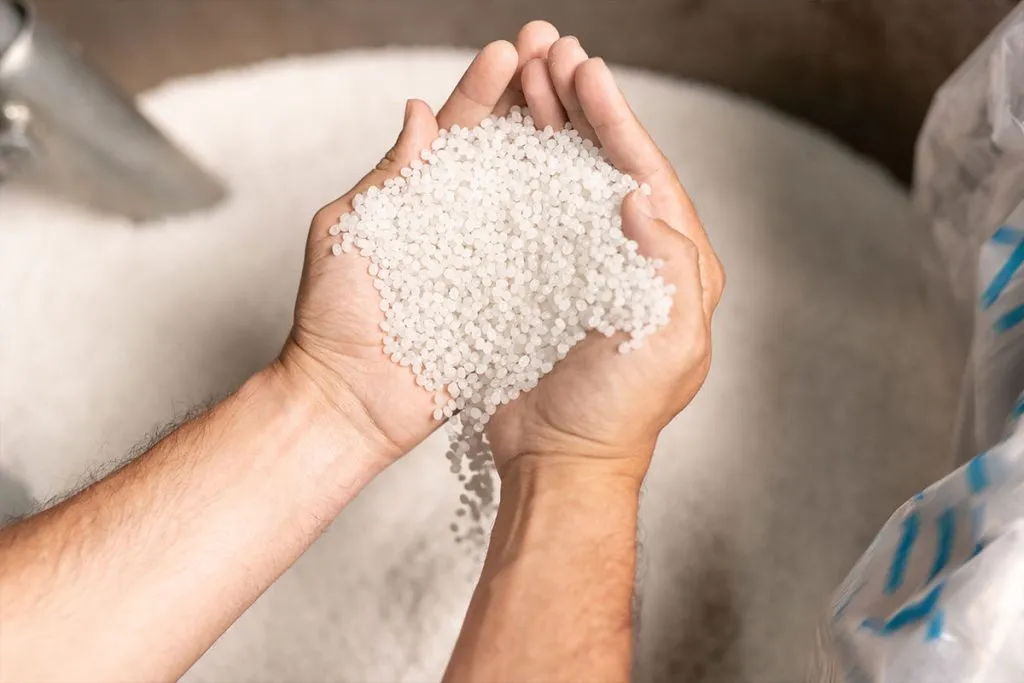How to avoid plastic pellet pollution: tips and regulations

What are pellets?
Pellets are the starting material for the production of a plastic product. They are about 5 mm in size and can vary in shape depending on the manufacturing process. They basically consist of the main polymer and additives. The main polymer provides structural properties and additives improve the material’s physical and mechanical properties and its processability.
To manufacture a plastic product, the pellets are melted until their texture is smooth and free-flowing. In this form, a mould is often used to give shape to the product. An additive masterbatch or other additives can be added separately during the melting process. Additive concentrates and concentrate masterbatches are also available. These masterbatches have additive concentrations of over 2%, unlike conventional pellets.
Examples of additives include colourants, UV protectors, antioxidants, antifungals and processing aids. These additives are controlled and listed in accordance with the REACH regulation. In addition, depending on the plastic product’s end use, regulations may be stricter. In the case of plastic food contact materials, the European Commission regulates additive safety by issuing Regulation (EU) No 10/2011 on plastic materials and articles intended to come into contact with food.
The processes of pellet production, transport and processing are liable to losses. Because of the size of this polymeric material, it is considered a microplastic and, therefore, a source of pollution.
Rules and regulations
The European Parliament adopted Regulation (EU) 2023/2055 of 25 September 2023, paragraph 11 of which specifies the following:
“Starting from 2026 manufacturers and industrial downstream users of synthetic polymer microparticles in the form of pellets, flakes and powders used as feedstock in plastic manufacturing at industrial sites, and, starting from 2027, other manufacturers of synthetic polymer microparticles and other industrial downstream users using synthetic polymer microparticles at industrial sites shall submit the following information to the Agency by 31 May of each year:
- a description of the uses of synthetic polymer microparticles in the previous calendar year;
- for each use of synthetic polymer microparticles, generic information on the identity of the polymers used;
- for each use of synthetic polymer microparticles, an estimate of the quantity of synthetic polymer microparticles released to the environment in the previous calendar year, which shall include also the quantity of synthetic polymer microparticles released to the environment during transportation;
- for each use of synthetic polymer microparticles, a reference to the derogation laid down in paragraph 4, point (a).
To prevent the release of pellets into the environment, a number of recommendations must be followed, such as providing workers with training on proper storage and transport, and how production, loading and unloading areas should be cleaned.
AIMPLAS can advise you on how to comply with current regulations. Contact us.